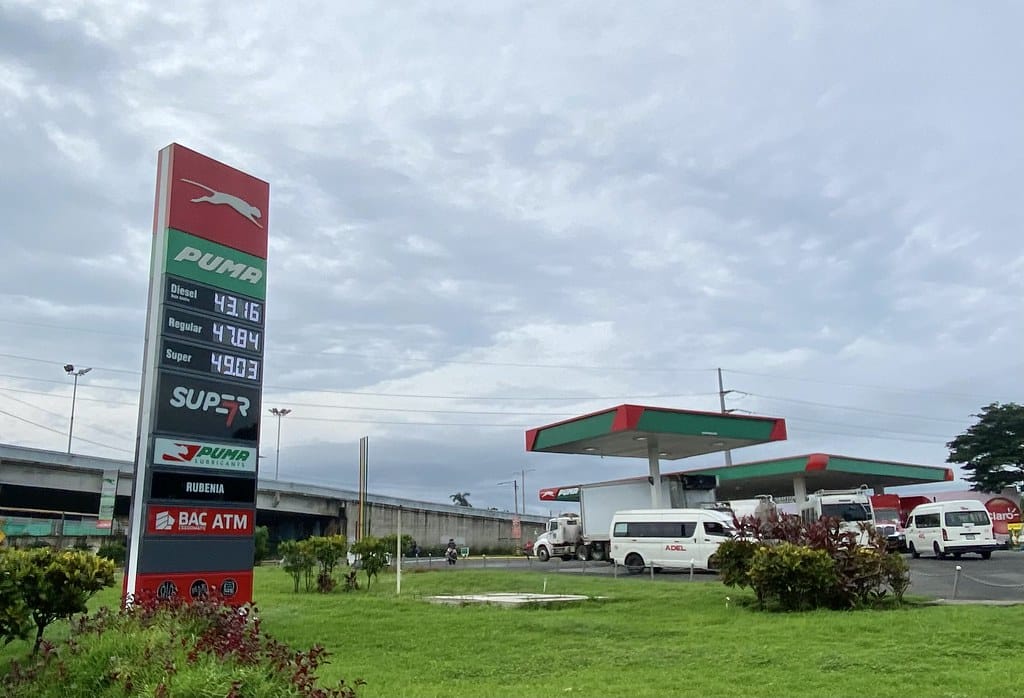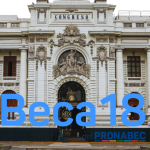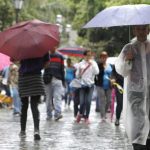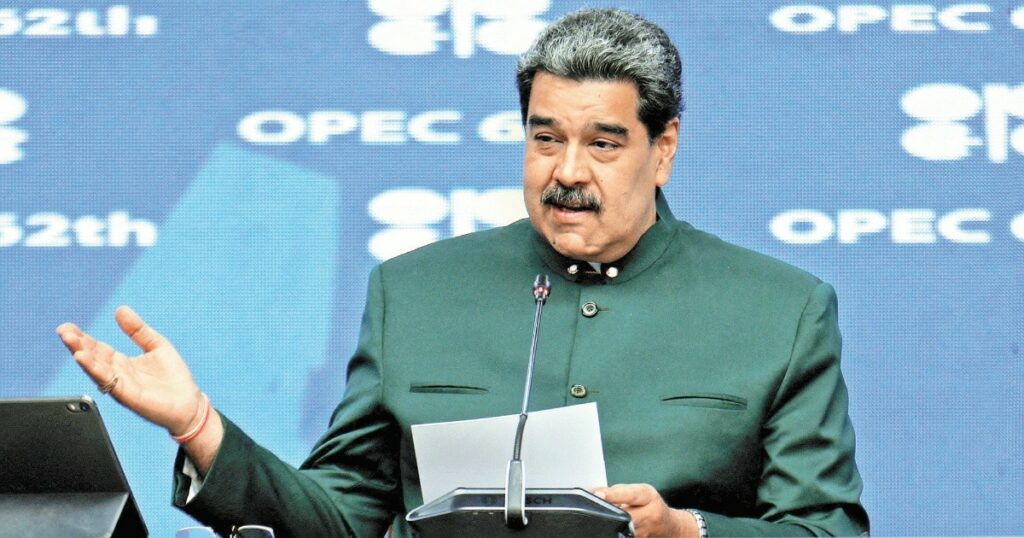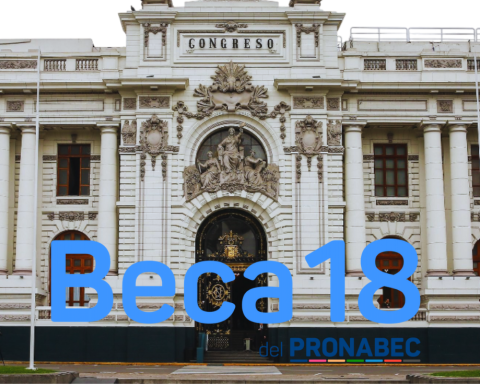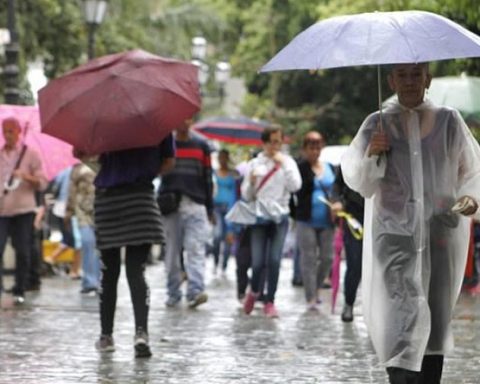Every Friday for six months, the director of the Nicaraguan Institute of Energy (INE)José Antonio Castañeda Méndez sits in front of the official media and reads the same statement. In it he reports that fuel prices and Liquefied Petroleum Gas (LPG) will remain unchanged for one more week. This official freeze has prevented consumers from enjoying relief in their pockets, while the oil companies, in collusion with the regime, pocket millions of dollars.
“The President of the Republic, Commander Daniel Ortega Saavedra and our fellow Vice President Rosario Murillo, given the constant increase…” Castañeda begins his reading. That increase to which she refers no longer exists since the beginning of last July, when the international price of oil from Texas or WTI —of reference for Nicaragua— began to fall until it currently stands at 80 dollars per barrel.
When the government established the price freezeoil was in the midst of a bullish spiral fueled by the invasion of the Russian government —a political ally of Ortega— in Ukraine. The so-called “black gold” reached its highest peak in June, when it was priced at up to 121.94 dollars per barrel.
Since the first week of last April, super gasoline it costs 48.97 cordobas per liter (185.10 cordobas per gallon); the regular It is quoted at 47.81 cordobas per liter (180.72 cordobas per gallon); Y the diesel —the fuel with the highest consumption nationwide— is sold at 43.21 córdobas (163.33 córdobas per gallon).
In the case of LPG, the 25-pound cylinder remains at 436 cordobas, the 10-pound cylinder at 180 cordobas and the 100-pound cylinder at 2004 cordobas, according to the INE and the Ministry of Energy and Mines.
These average prices correspond to Managua, since in the other departments and regions of the country the cost of transportation and distribution, as well as other expenses, must be added.
Hydrocarbons experts, who asked to omit their names for fear of reprisals, explained that fuel prices in Nicaragua they should be in ranges similar to those of last January, when the average price of oil was 83.22 dollars per barrel, which is close to the average price of this September: 84.48 dollars.
INE official statistics They show that, last January, the average price of super gasoline was 41.97 córdobas per liter (158.64 córdobas per gallon); the regular one 40.98 córdobas per liter (154.90 córdobas per gallon); and that of diesel 37.13 córdobas (140.35 córdobas per gallon).
When comparing the current prices with those of last January, a difference of seven córdobas per liter (26.46 córdobas per gallon) is obtained, in the case of super gasoline; 6.83 cordobas per liter (25.82 cordobas per gallon) in the regular; and 6.08 cordobas per liter (22.98 cordobas per gallon) for diesel.
Second fuel freeze
The experts indicated that this surcharge favors the oil companiesalthough the amount per liter or gallon cannot be determined, since the regime and the oil companies keep secret the structure or formula for defining fuel prices, which include their profit margins.
In December 2019, The United States sanctioned the Nicaraguan Petroleum Distributor, which changed the composition of the national fuel market: the oil companies Puma and UNO absorbed Petronic’s sales. Prior to the US punishment, the DNP Petronic and Puma gas stations dominated the hydrocarbon business.
In Nicaragua, fuel prices are not regulated by the State and they are set freely, every week, by the oil companies. LPG —popularly known as “cooking gas”— is the only product regulated by the INE.
One of the experts stressed that the current freezing policy shows that in Nicaragua there is “a collusion” between the regime and the oil companies, since, without being authorized by law, the Government dictates when to raise or lower fuel prices, “always in favor of the oil companies.”
This is the second time, in less than a year, that the Nicaraguan State freezes fuel prices. Between the end of October 2021 and the middle of last January, the regime ordered not to raise or lower the prices of gasoline, diesel and LPG. During those more than two months, the international value of crude oil fell almost 20 dollars per barrel, so consumers did not get any relief either, while the oil companies kept more profits.
At the beginning of that “freeze”, In October 2021, WTI oil was selling at $84.53 and fell to as low as $65.44 per barrel in early December. The regime decided to “liberate” the fuels when the “black gold” again exceeded the barrier of 80 dollars per barrel.
The “first freeze” came two weeks before the general election in which Ortega, without political competition, gave himself his third re-election consecutive for a fourth term in a row, and second with his wife, Rosario Murillo, as vice president.
Policy to favor oil companies and institutions
Reports of CONFIDENTIAL have revealed that heNicaraguans have paid a premium in fuels, which until the beginning of 2021 exceeded 30 million dollars. This capital gain is obtained through a fuel price freeze policy in Nicaragua, when in the international arena fuels and oil fall.
The economist Enrique Sáenz has denounced in the program Tonight —which is broadcast on YouTube and Facebook Live, due to Ortega’s censorship— that behind the freezing policy a gigantic fraud is hidden.
According to data from the economist in exile —based on figures from the Committee for Hydrocarbon Cooperation in Central America—, in 2021, the oil companies pocketed some 160 million dollars in overpricing.
“The only explanation is that these are fraudulent priceswhich are imposed from the economic power and from the political power” and that “translates into surplus profits for those who are in the business: Ortega and his cronies,” said Sáenz.
An expert in hydrocarbons pointed out that another possibility is that the regime uses the current surcharge to finance the fuel consumption of institutions of the State such as the National Police and the Army, or maintain the exemptions of industrial clients.
“The relief or rebates that exist in the international market are not transferred to consumers, but rather they use it to lighten their spending budget and use that money in other items, which only they know about,” said the specialist.
What to call it: Subsidy or freeze?
According to the INE, the objective of keeping fuel prices frozen is to “mitigate the impact of the increase in these (international) prices on the economy of Nicaraguan families.”
The Ortega Executive has indicated that, supposedly by assuming 100% of the increases in the prices of fuels and liquefied cooking gas, the State of Nicaragua disburses between four and six million dollars weekly.
Nicaragua has a fund of 200 million dollars as part of a line of credit of up to 800 million dollars, arranged by the Central American Bank for Economic Integration (CABEI) to finance a regional program to support the global rise in fuel prices.
This millionaire loan will be added to Nicaragua’s foreign debt, which at the end of 2021 reached 14,308 million dollars, the highest peak during Ortega’s 15 years in power.

The Ortega propaganda has sold this fund as a fuel subsidy; however, Rubén Ernesto Arriola, an expert on consumer issues, indicated that That money goes to the oil companies.
“The borrowed money is to keep prices frozen, if it were a subsidy, the prices of petroleum derivatives would fall and thus maintain prices for a certain time, through a law approved by the National Assembly,” Arriola explained.
He explained that, generally, the subsidies are approved by the Parliaments and have an expiration period or, in some cases, are indeterminate, until the Assembly itself suspends them.
“They specify the percentage that favors consumers, and they are not given in weekly communications,” he added.
Regime omits the alleged increases in gasoline
State statements only change some data from one Friday to another: the supposed amount assumed by the Government and the week of validity of the freeze.
“According to international fuel prices, for the following week the price of super gasoline should increase…, regular gasoline…, and diesel…, however, our government has decided to assume 100% of said increases, for the benefit of Nicaraguan families”, reads the director of the INE every week.
A team of CONFIDENTIAL reviewed all the communications and found that, since the beginning of last August, the regime has omitted the data on the increase in gasoline.
The last time they published gasoline dataon Friday, July 29, the Government indicated that the super “should be increased by 6.92 C$/gallon and regular gasoline by 0.65 C$/gallon”.
In his most recent appearance before the official media, Castañeda Méndez read: “For the following week, the prices of gasoline and diesel fuels will remain unchanged, requiring an increase of 1.96 C$/gallon for diesel.”
One of the hydrocarbon experts stressed that, by omitting this information, the State recognizes that there is no increase in gasoline, which is why they should lower their prices in Nicaragua. In the case of diesel, in the international market its price still shows some peaks.
“There is, to date, no technical study on the financial reasons for the freeze of petroleum derivatives in Nicaragua,” warned Arriola, from the Consumer Manager Consultancy.
Second most expensive in Central America
Fuels in Nicaragua were placed, last June, as the second cheapest in the isthmus, only behind El Salvador, in the case of gasoline; and from El Salvador and Honduras, in diesel, according to figures from the Central American Hydrocarbons Cooperation Committee (CCHAC), of the Central American Integration System (SICA).
The experts warned that, in Central America, the other countries have begun to lower fuel prices, for which Nicaragua once again positioned itself as the second country with the most expensive prices in the regiononly surpassed by the costs in Costa Rica.
Nicaragua and Costa Rica are the only countries in the region with gasoline above five dollars per gallon. In Costa Rica, a gallon of super gasoline is sold at 5.66 dollars, that of regular at 5.19 dollars, and that of diesel at 5.16 dollars, according to statistics from the General Directorate of Hydrocarbons of El Salvador and the Secretary of Energy of El Salvador. Honduras.
In addition, Nicaragua is the second country in America where consumers buy fewer liters of gasoline with their average salaryaccording to a study by the private platform Picodi, specialized in savings, discounts and offers.
With an average net salary of 10,390 córdobas —about 290 dollars—, a Nicaraguan bought, until last June, about 212 liters of super gasoline, which represents about 41 liters less than a year ago, according to the web portal, with a presence in Spain. and four American countries.
Worse than Nicaragua is only Cuba, where citizens can buy about 27 liters of gasoline with an average salary of 35 dollars.
In his appearance every Friday, the director of the INE affirms that “the impact that these prices have on the family economy and the economic sectors of the country is a constant concern of the Presidency of the Republic,” and avoids mentioning the oil companies.
